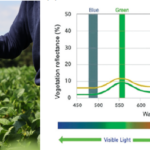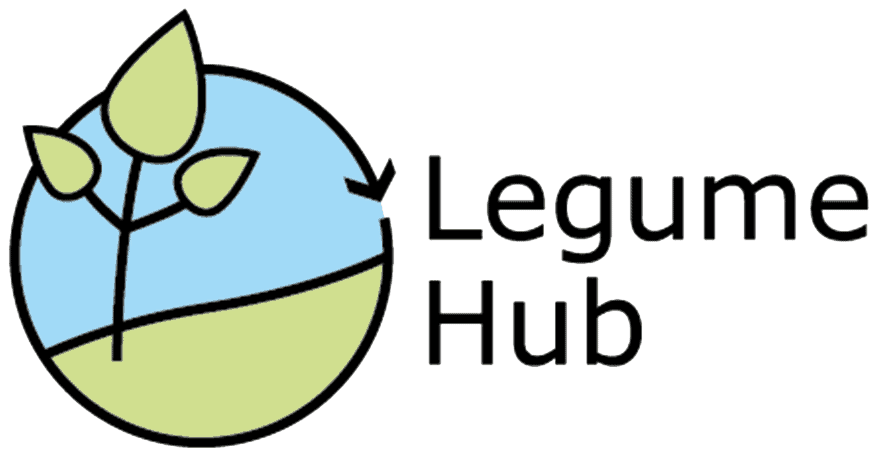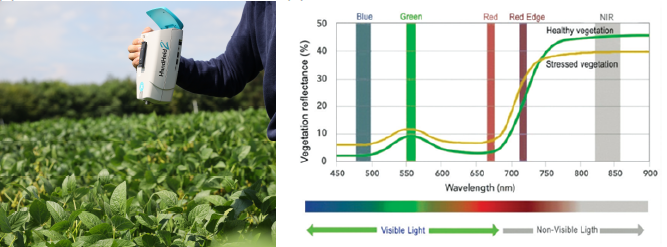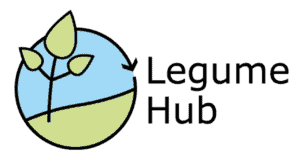- Benedikt Johannes Piller
- 2025
-
Soybean is the major crop for high-protein feed and food in Europe, however domestic production is low due to non-adapted varieties for drought events and time to maturity. Especially, drought stress during growing season can cause severe yield loss in soybean. The present work focused on phenotyping of European soybean varieties of maturity groups (MG) 000 – I, grown in Tulln (Austria) under rainfed conditions. Phenotyping traits were visually scored and screened by hyperspectral and thermal imaging (TIR) techniques. Varietal differences in time to flowering, time to maturity (ttm), plant height, stomatal density, yield, 16 hyperspectral reflectance indices and canopy temperature were examined. Furthermore, TIR method was evaluated for two daytimes (12:00h, 15:00h) and applied for simplified Crop Water Stress Index (siCWSI). Results showed significant differences in ttm between MG. Plant height showed a positive relationship with ttm, while yield reached an optimum at MG 00. Stomatal density of European soybean varieties was published first time: stomatal density was significantly different and ranges between 203.4 and 322.2 stomata/mm². Soybean of MG 000 showed significant correlation between yield and chlorophyll index, red edge inflection point, water indices WI-1, NWI-2 and NWI-4. Later maturing soybean sets had less relationship between indices and yield. Correlation between siCWSI and morphological traits were higher at 15:00h than at 12:00h. Plant phenotyping is a crucial process to improve genetic material due to drought tolerance and ttm and predicting yield. These findings will contribute to a better understanding of varietal differences in European soybean varieties.
-

piller -
Soybean is the major crop for high-protein feed and food in Europe, however domestic production is low due to non-adapted varieties for drought events and time to maturity. Especially, drought stress during growing season can cause severe yield loss in soybean. The present work focused on phenotyping of European soybean varieties of maturity groups (MG) 000 – I, grown in Tulln (Austria) under rainfed conditions. Phenotyping traits were visually scored and screened by hyperspectral and thermal imaging (TIR) techniques. Varietal differences in time to flowering, time to maturity (ttm), plant height, stomatal density, yield, 16 hyperspectral reflectance indices and canopy temperature were examined. Furthermore, TIR method was evaluated for two daytimes (12:00h, 15:00h) and applied for simplified Crop Water Stress Index (siCWSI). Results showed significant differences in ttm between MG. Plant height showed a positive relationship with ttm, while yield reached an optimum at MG 00. Stomatal density of European soybean varieties was published first time: stomatal density was significantly different and ranges between 203.4 and 322.2 stomata/mm². Soybean of MG 000 showed significant correlation between yield and chlorophyll index, red edge inflection point, water indices WI-1, NWI-2 and NWI-4. Later maturing soybean sets had less relationship between indices and yield. Correlation between siCWSI and morphological traits were higher at 15:00h than at 12:00h. Plant phenotyping is a crucial process to improve genetic material due to drought tolerance and ttm and predicting yield. These findings will contribute to a better understanding of varietal differences in European soybean varieties.
- Piller, B., 2025
Piller, B., 2025 - Piller, B., 2025, Defensio
Piller, B., 2025, Defensio -
2025. The unexplored diversity of rough-seeded lupins provides rich genomic resources and insights into lupin evolution. Legume Hub. https://www.legumehub.eu
-
Susek K, Vincenzi L, Tomaszewska M, Kroc M, Franco E, Cosentino E, Limongi AR, Tanwar UK, Jamil H, Nelson MN, Bayer PE, Edwards D, Papa R, Delledonne M, Jackson SA. The unexplored diversity of rough-seeded lupins provides rich genomic resources and insights into lupin evolution. Nat Commun. 2025 May 10;16(1):4358. doi: 10.1038/s41467-025-58531-w.
Phenotyping of European soybean varieties with different time to maturity for drought tolerance
Posted: 15.10.2025
Soybean is the major crop for high-protein feed and food in Europe, however domestic production is low due to non-adapted varieties for drought events and time to maturity. Especially, drought stress during growing season can cause severe yield loss in soybean. The present work focused on phenotyping of European soybean varieties of maturity groups (MG) 000 – I, grown in Tulln (Austria) under rainfed conditions. Phenotyping traits were visually scored and screened by hyperspectral and thermal imaging (TIR) techniques. Varietal differences in time to flowering, time to maturity (ttm), plant height, stomatal density, yield, 16 hyperspectral reflectance indices and canopy temperature were examined. Furthermore, TIR method was evaluated for two daytimes (12:00h, 15:00h) and applied for simplified Crop Water Stress Index (siCWSI). Results showed significant differences in ttm between MG. Plant height showed a positive relationship with ttm, while yield reached an optimum at MG 00. Stomatal density of European soybean varieties was published first time: stomatal density was significantly different and ranges between 203.4 and 322.2 stomata/mm². Soybean of MG 000 showed significant correlation between yield and chlorophyll index, red edge inflection point, water indices WI-1, NWI-2 and NWI-4. Later maturing soybean sets had less relationship between indices and yield. Correlation between siCWSI and morphological traits were higher at 15:00h than at 12:00h. Plant phenotyping is a crucial process to improve genetic material due to drought tolerance and ttm and predicting yield. These findings will contribute to a better understanding of varietal differences in European soybean varieties.
Downloads
About this article
Acknowledgement: This study was supported by the National Science Centre, Poland (grant nos. HARMONIA 7 2015/18/M/NZ2/00422 and OPUS 18 2019/35/B/NZ8/04283 to KS). We acknowledge the support provided by the Horizon 2020 Project INCREASE, grant agreement number 862862 (R.P. and K.S.; https://www.pulsesincrease.eu). INCREASE has received funding from the European Union’s Horizon 2020 research and innovation programme under grant agreement no. 862862. This publication reflects only the author’s view and neither the Research Executive Agency (REA) nor the European Commission are responsible for any use that may be made of the information it contains.
For matters related to publisher, citation and copyright, please refer to the original article.
The content is solely the responsibility of the authors. No warranties, expressed or implied, are made with respect to the information provided. Information relating to the use of plant protection products (pesticides) must be checked against the product label or other sources of product registration information.



0 Comments